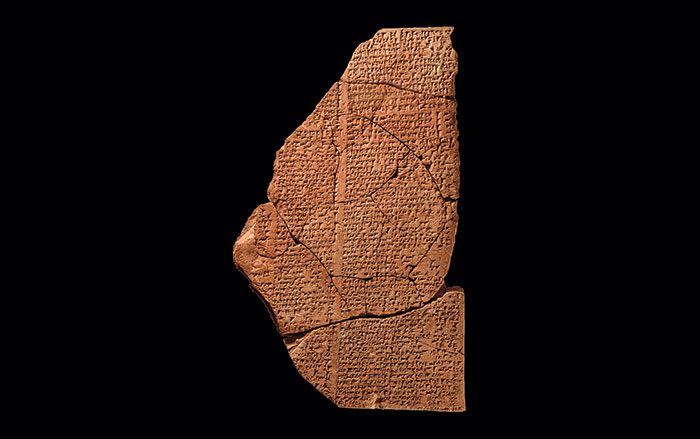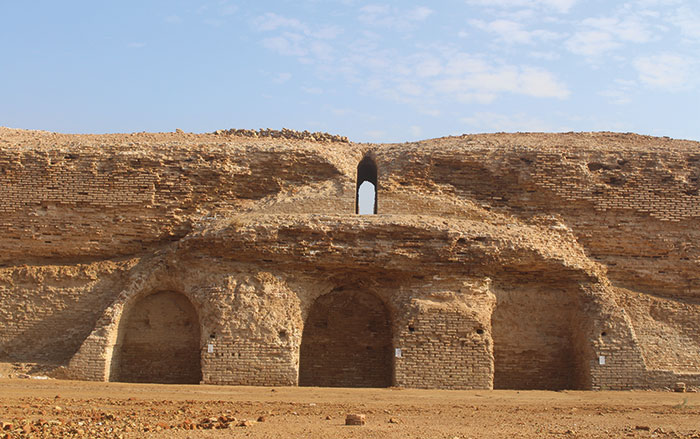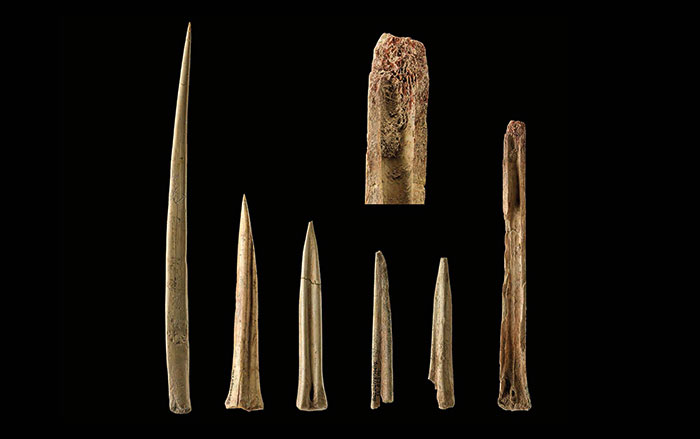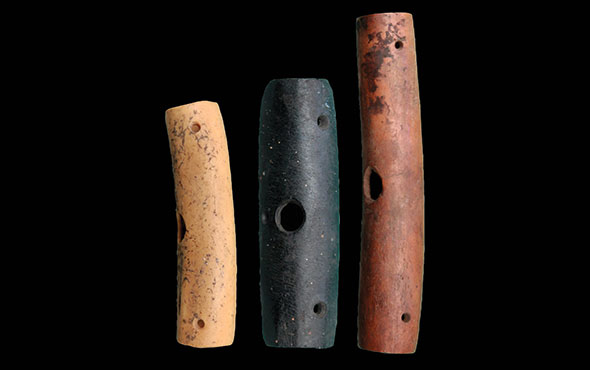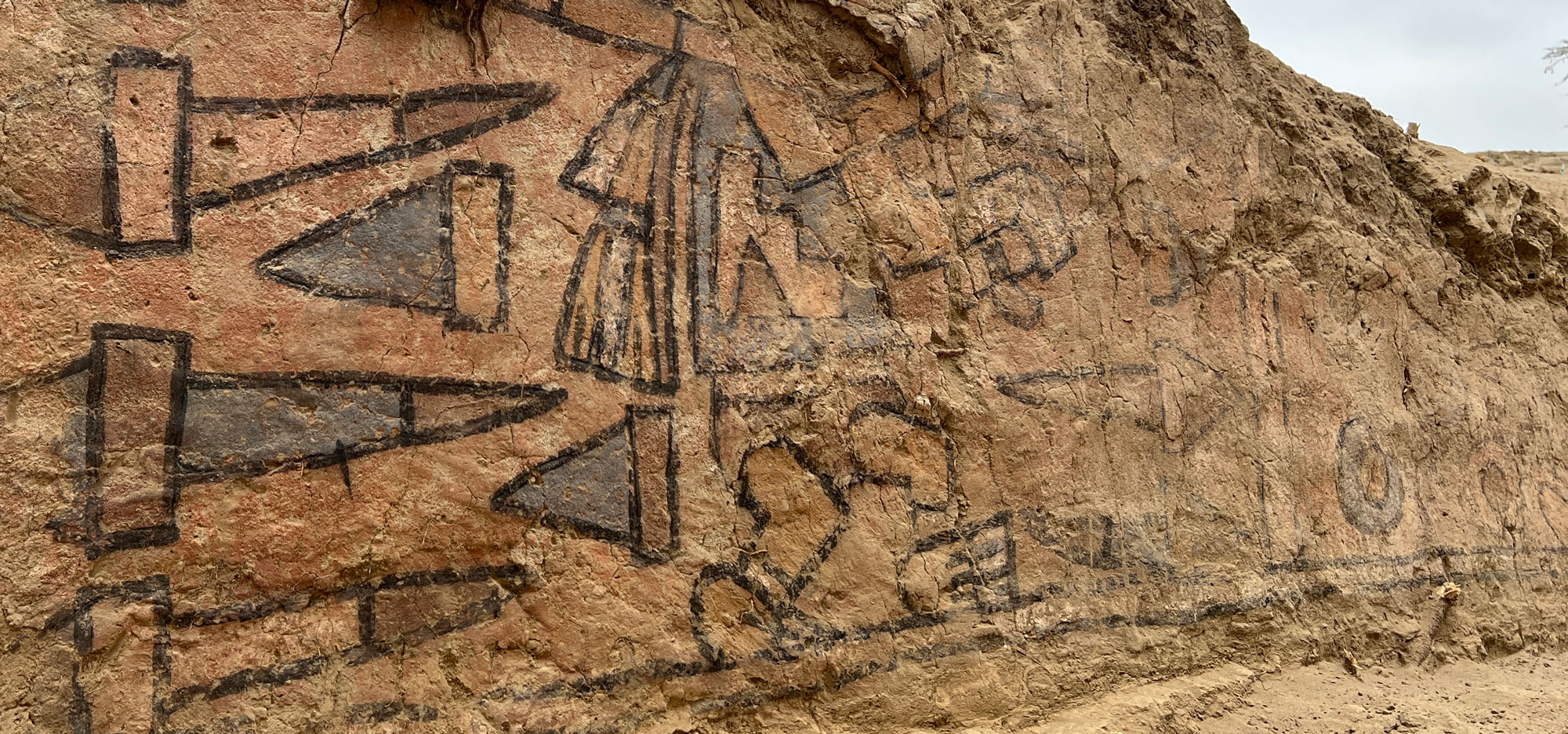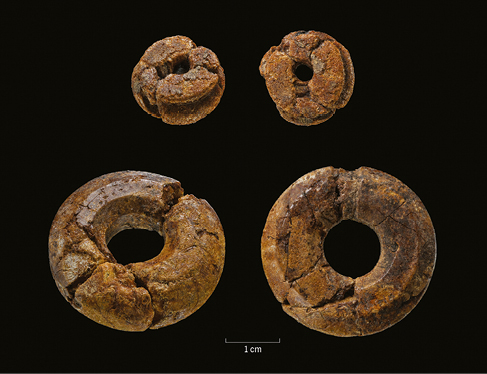
HALLE, GERMANY—According to a statement released by the Saxony-Anhalt State Museum of Prehistory, two disc-shaped beads discovered under Iraq’s ziggurat of Assur in 1914 by researchers from the Royal Museums in Berlin and the German Orient Society have been analyzed with Fourier Transform Infrared Spectroscopy (FT-IR) by a team of researchers from the State Office for Heritage Management and Archaeology Saxony-Anhalt, the Martin Luther University of Halle-Wittenburg, and the Berlin State Museums. The new study suggests that the beads, which were found among several thousand shell, stone, glass, and pottery beads in a tunnel under the ziggurat and have been dated to about 1800 B.C., were made of amber from the Baltic or North Sea region. Amber would have been extremely rare in southwest Asia at this time, the researchers explained, and may have been carried by people from central or western Europe traveling along routes controlled by the wealthy Central German Únětice culture to elites living farther south. Amber eventually became more widely available after 1550 B.C., when widespread trading networks were established. Read the original scholarly article about this research in Acta Archaeologica. For more on these trade networks, go to "The Mesopotamian Merchant Files."


